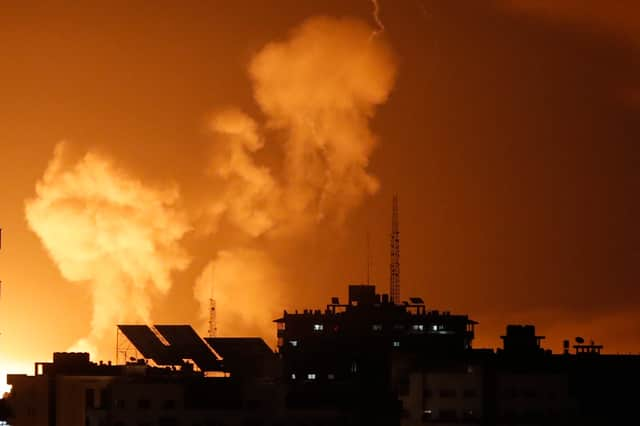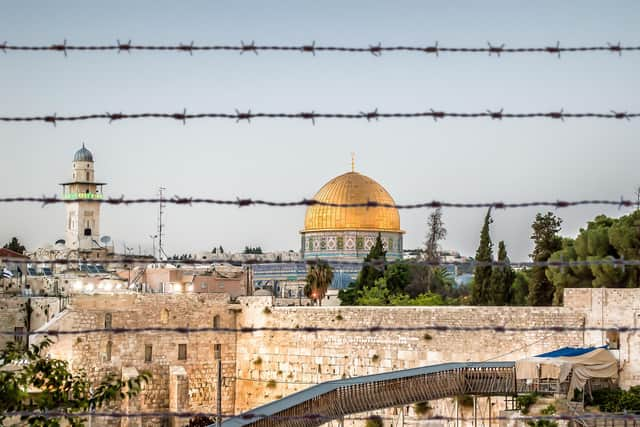Why has Israel launched strikes in Lebanon and Gaza? Rocket attack after police raids at al-Aqsa mosque


Israel has carried out airstrikes in Lebanon and Gaza on Thursday (6 April) in response to reported rocket attacks from both areas. The strikes are the first major escalation in violence between Israel and Lebanon since the 2006 Lebanon War, and the first major escalation between Israel and Gaza since the 2014 Gaza War.
The rocket attacks from Lebanon were reportedly carried out by Palestinian militants and the Israel Defense Forces (IDF) said that it had targeted a number of Hamas positions in the country, as well as a number of rocket launching sites. The Israeli military also claimed that it had shot down a number of rockets that were fired from Lebanon.
Advertisement
Hide AdAdvertisement
Hide AdTensions are high after Israeli police raided Jerusalem's al-Aqsa mosque on consecutive nights earlier this week. The mosque is the third-holiest site in Islam, and is based on Temple Mount, which is also considered the holiest site in Judaism.


The rocket attacks from Gaza were reportedly carried out by Hamas, the militant group that controls the Gaza Strip. The Israeli military said that it had also launched strikes on a number of Hamas positions in Gaza, as well as a number of rocket launching sites.
In a statement early on Friday, the IDF tweeted that it had truck targets "including terrorist infrastructures belonging to Hamas in southern Lebanon". The IDF added that it would not allow Hamas to operate from Lebanon and held Lebanon "responsible for every directed fire emanating from its territory".
Earlier this week, Ambassador Riyad Mansour, who is Permanent Observer of the State of Palestine to the United Nations, said: “Palestinian worshippers have the right, without any clarifications, to exercise their right to worship in Al-Haram Al-Sharif, all the time, especially during Ramadan. Adding other elements is diminishing the horrors of Israel’s aggression”.
Advertisement
Hide AdAdvertisement
Hide AdThe following are some of the key events that led up to the Israeli strikes in Lebanon and Gaza:
- 1 April: Israeli police stormed the Al-Aqsa Mosque compound in Jerusalem, sparking clashes with Palestinian worshippers.
- 2 April: Hamas, the militant group that controls the Gaza Strip, fired a rocket into Israel.
- 3 April: Israel carried out airstrikes on Hamas targets in Gaza.
- 4 April: Palestinian militants fired a barrage of rockets into Israel.
- 5 April: Israel carried out airstrikes on Hamas targets in Gaza.
- 6 April: Palestinian militants fired a rocket into Israel. Israel responded by carrying out airstrikes on Hamas targets in Gaza and Lebanon.
In a televised address, Israeli Prime Minister Benjamin Netanyahu said: “We will cripple our enemies and they will pay a price for any aggression.”
The Israeli strikes in Lebanon and Gaza have been condemned by a number of countries, including the United States, the United Nations, and the European Union. The United Nations peacekeeping force in Lebanon, Unifil, said the situation was "extremely serious" and urged "restraint and to avoid further escalation". Lebanese Prime Minister Najib Mikati condemned any military operations from the country's territory that "destabilise the situation".
Comment Guidelines
National World encourages reader discussion on our stories. User feedback, insights and back-and-forth exchanges add a rich layer of context to reporting. Please review our Community Guidelines before commenting.
